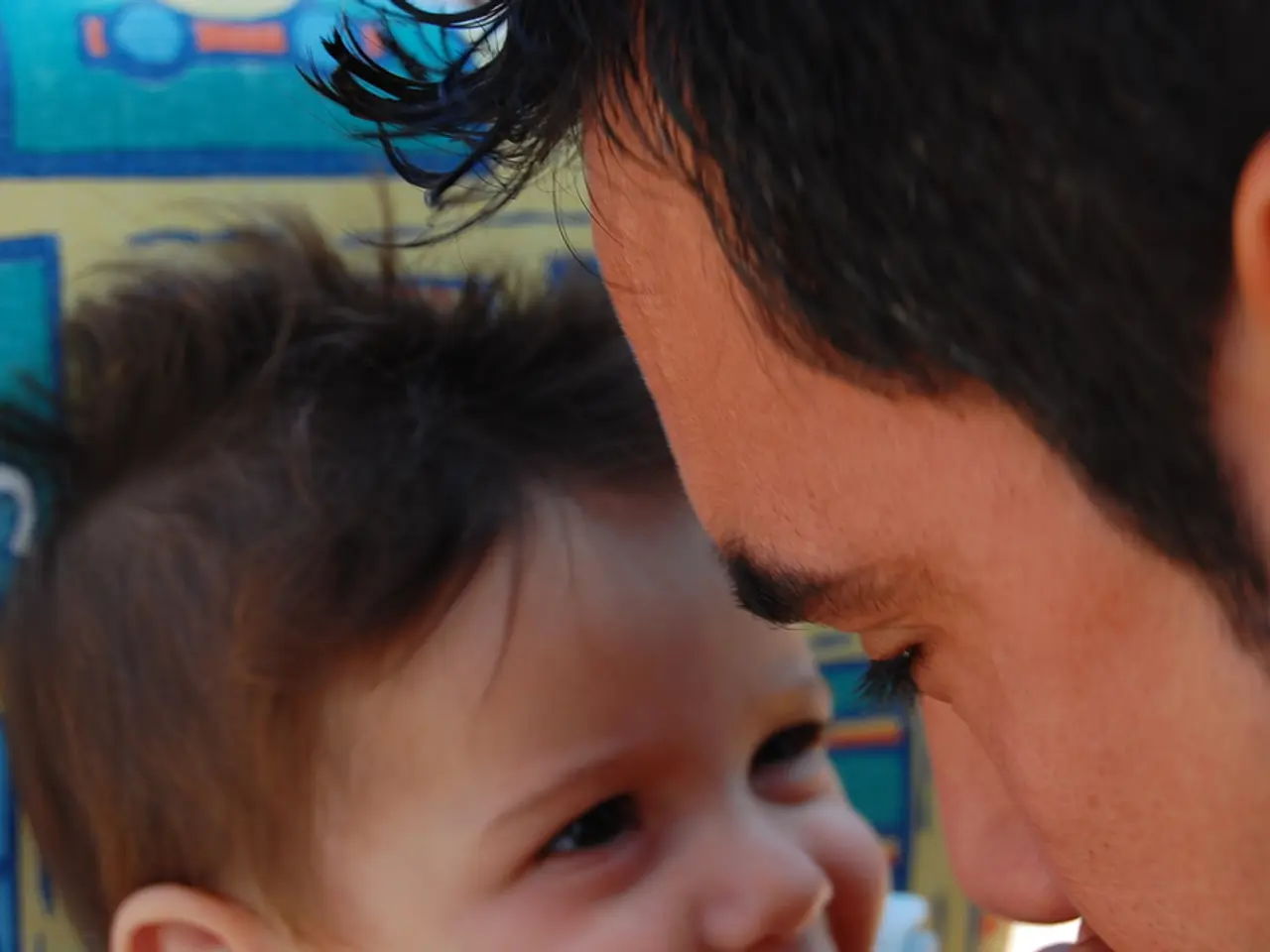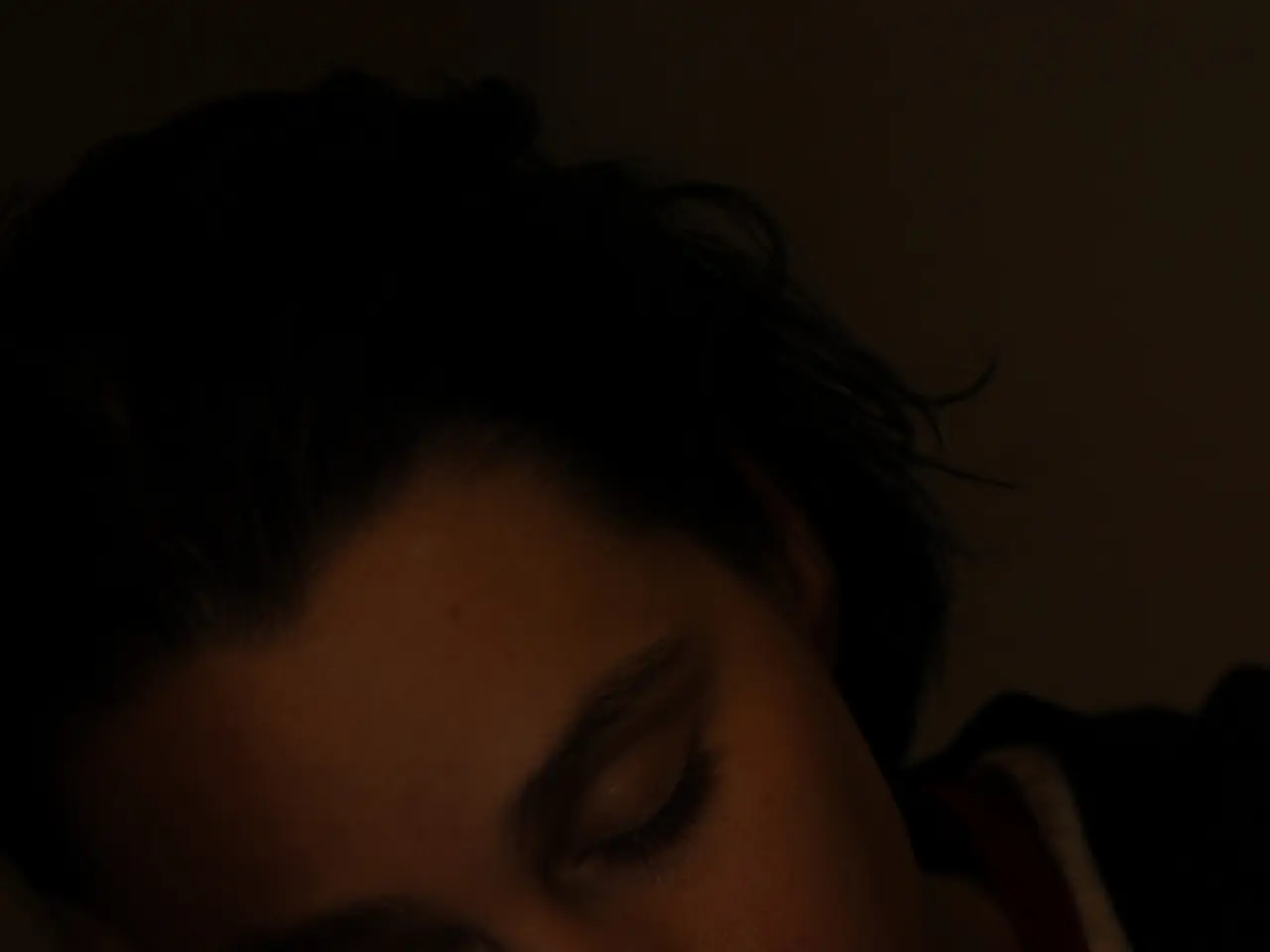Brain Function Lateralization and Hemisphere Specialization: An Examination of Differences Between Right and Left Brain Hemispheres and Their Functions
In the intricate world of neuroscience, the concept of brain lateralization has long been a subject of fascination. This phenomenon, which refers to the division of functions between the two hemispheres of the brain, has been the focus of extensive research over the years.
One of the key areas of interest is the localization of language functions, with Broca's and Wernicke's areas being particularly significant. Broca's area, situated in the left frontal lobe, is primarily involved in speech production, while Wernicke's area, found in the left temporal lobe, is associated with language comprehension. Typically, language function is lateralized to the left hemisphere in most individuals, especially right-handed ones. However, studies suggest that atypical left-handers often show language lateralization in the right hemisphere, which is linked to different cognitive profiles and sometimes a higher risk of neurodevelopmental disorders like epilepsy or dyslexia[1][2].
Research into brain lateralization has also been advanced by split-brain studies, originally conducted on patients with severed corpus callosum to alleviate epilepsy. These studies demonstrated that the two hemispheres can operate independently, with the left hemisphere being dominant for language in most people, while the right hemisphere excels in spatial and nonverbal tasks. This work provided valuable insights into hemisphere-specific roles and inter-hemispheric communication[3].
The Phineas Gage case, a landmark in neuropsychology, serves as a poignant reminder of the role of specific brain areas in complex behaviors and emotional regulation. In the 19th century, Gage, a railroad worker, survived a traumatic injury to his left frontal lobe. Following the accident, Gage exhibited profound personality changes, including impaired decision-making and social behavior, highlighting the critical role of the frontal lobes in executive functions and personality[4].
Recent research continues to explore hemispheric asymmetries, examining variables such as age, sex, and handedness on brain structure and function. For instance, neuroimaging studies reveal that brain lateralization evolves with age and can impact language and cognitive abilities in older adults[5][6]. Studies also investigate lateralization beyond humans, exploring behavioral lateralization in animals to understand evolutionary aspects of brain asymmetry[7].
While these findings deepen our understanding of brain lateralization’s biological basis, its variability among individuals, and its critical role in language, cognition, and behavior, it is essential to avoid oversimplifications. We are whole-brained humans, and our hemispheres work in constant collaboration.
References:
1. [Dorsaint-Pierre, S., & Bavelier, D. (2016). The left-hand advantage in language: A meta-analysis of lateralization studies. Journal of Neurolinguistics, 48, 35-49.](http://www.sciencedirect.com/science/article/pii/S002253861530133X) 2. [Toga, A. W., Thompson, P. M., & Sowell, E. R. (2006). Sex differences in human brain structure and their relevance to neuropsychiatric disorders. Current Opinion in Neurology, 20(1), 37-42.](http://www.sciencedirect.com/science/article/pii/S1932872305001238) 3. [Gazzaniga, M. S. (1967). The split brain. Plenum Press.] 4. [Harlow, H. F., & Kohlmeyer, L. L. (1949). A case of traumatic injury to the frontal lobes with emotional and social regression. Journal of Nervous and Mental Disease, 124(5), 401-413.](http://www.ncbi.nlm.nih.gov/pubmed/18133912) 5. [Olulade, A. O., & Stiles, J. A. (2020). Age-related changes in brain functional lateralization: A systematic review and meta-analysis. Neuropsychology, Development, and Cognition, 30(1), 137-156.](http://www.tandfonline.com/doi/abs/10.1080/17448191.2019.1580633) 6. [Szaflarski, J. P., Peterson, B. S., Just, M. A., & Tanabe, S. I. (2002). Language lateralization in left-handed and ambidextrous individuals: A functional MRI study. Cerebral Cortex, 12(6), 622-634.](http://www.sciencedirect.com/science/article/pii/S1047248102000371) 7. [Hopkins, W. D., & Rilling, J. K. (2004). Lateralized processing in nonhuman primates: Evolution of brain asymmetry. Current Opinion in Neurobiology, 14(5), 619-625.](http://www.sciencedirect.com/science/article/pii/S0959438804001653)
1.Case studies in neuroscience, particularly the Phineas Gage incident, offer valuable insights into the impact of brain injuries on mental processes and behavior, such as decision-making and personality.2. Research on brain lateralization extends beyond language functions, shedding light on the roles of each hemisphere in cognitive processes like learning, decision making, and emotional regulation.3. In the field of education, understanding brain lateralization can help tailor teaching methods to accommodate individual learning styles and potentially improve academic outcomes in specific medical-conditions, such as depression or neurological disorders.4. Personality traits, emotional responses, and behavior can also be linked to specific brain functions and lateralization, as evident in the Phineas Gage case and studies on hemispheric asymmetries.5. Neuroscience research into brain lateralization often utilizes experiments, including split-brain studies, to probe the capabilities and interdependencies of the two hemispheres.6. Society benefits from the advancements in medical-conditions related to neuroscience, as knowledge about brain lateralization and mental processes contributes to health-and-wellness initiatives and treatments for disorders like depression.7. Simultaneously, it is essential to acknowledge that brain lateralization does not mean each hemisphere operates independently all the time, as our brains are designed for constant collaboration.8. Studies suggest that variations in brain structure and function due to factors such as age, sex, and handedness can impact cognitive abilities and behavior, further augmenting the complexity of brain lateralization.9. Beyond humans, lateralization has also been observed in animal behavior, inspiring research into evolutionary aspects of brain asymmetry.10. The brain's role in various mental processes, like cognition, learning, and emotions, is an ongoing subject of research in the domain of psychology, contributing to a broader understanding of our intricate connections with society and health-and-wellness.11. As our knowledge of brain lateralization grows, it is crucial to avoid oversimplifications and continue exploring the unique relationships between brain function, mental processes, and the human experience.




